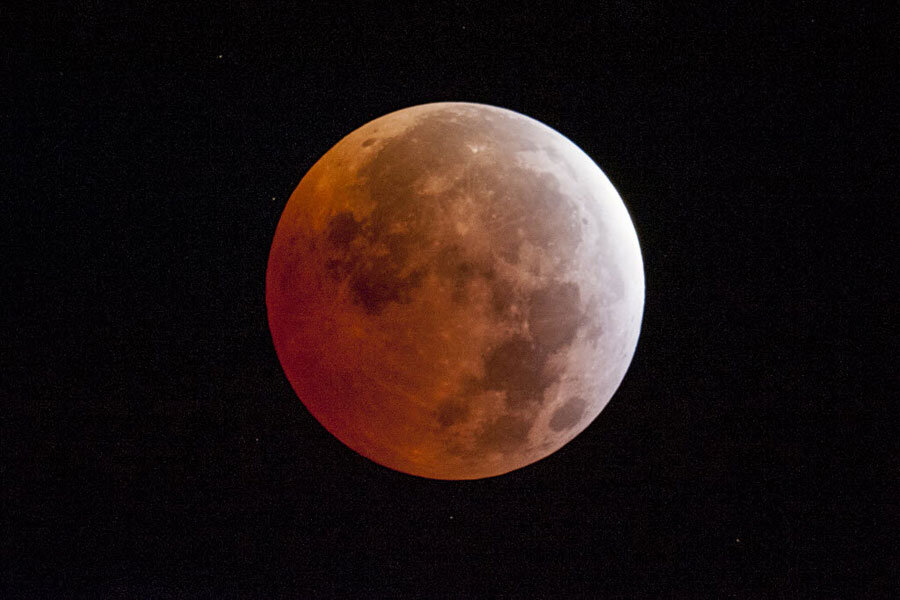Blood moon wows skywatchers. When will the next one be?
Loading...
On April 4, skywatchers on four different continents witnessed a total lunar eclipse, if only briefly. But not to worry if you missed it – the eclipse, which lasted around five minutes and was the shortest of the century, was the third in a series of four total lunar eclipses. It may be possible to catch sight of another one fairly soon.
When four total lunar eclipses occur consecutively, each separated by about six months, the event is known as a lunar tetrad. April and October of last year brought the first two eclipses of this tetrad, and the fourth and final will occur in late September of this year.
But why do these lunar eclipses consistently occur about six months apart?
Because the Moon's orbit is angled relative to the Earth's orbit around the sun, lunar eclipses can only happen during what are known as eclipse seasons. Every six months, for about 34 days, the Moon aligns closely enough with the Sun and Earth for an eclipse to take place. The two points at which the plane of the Moon's orbit crosses the plane of the Earth's orbit around the Sun, or the ecliptic, are known as the lunar nodes.
More specifically, the Moon's orbit around the Earth is inclined by about 5 degrees in respect to the ecliptic. So although the Moon revolves around the Earth every four weeks or so, it doesn't always return back to a position where the Earth sits between itself and the Sun. If that were to occur, a lunar eclipse would take place with every full moon. It is only when the Moon passes through one of these nodes that a lunar eclipse is visible from Earth.
So a full moon doesn't necessarily make for a lunar eclipse, but a lunar eclipse always means there's a full moon:
Since last weekend's eclipse fell during the month of April, the full moon received the special designation "pink moon" not for its color, but for its close coinciding with the start of the spring season and emergence of flowers.
At least two eclipses, lunar or solar, typically take place over the course of a year. The next eclipse season will hold both a partial solar eclipse, set to occur on Sept. 15, and the final total lunar eclipse of the ongoing tetrad, scheduled to take place on September 28. The final eclipse of the tetrad may also be a bit more accessible: the eclipse will last for over an hour and will be visible to Europe and Africa in addition to the Americas, parts of Asia and the Pacific.








